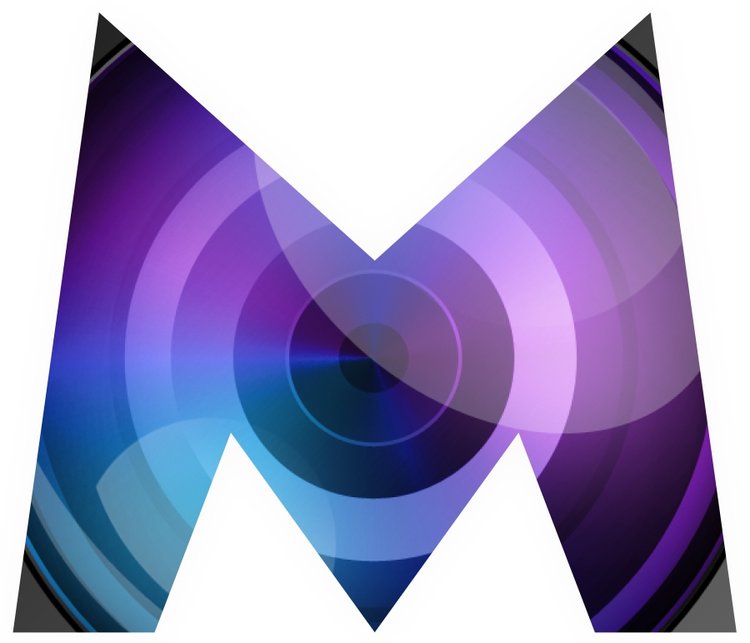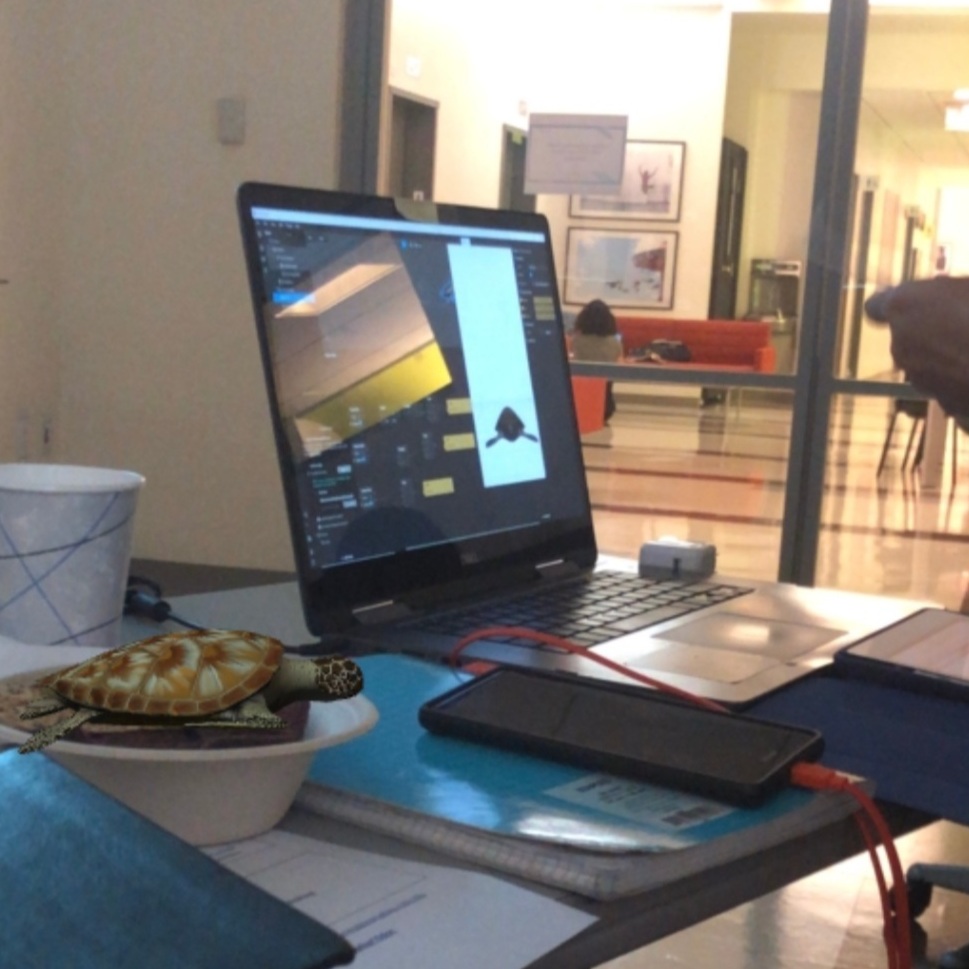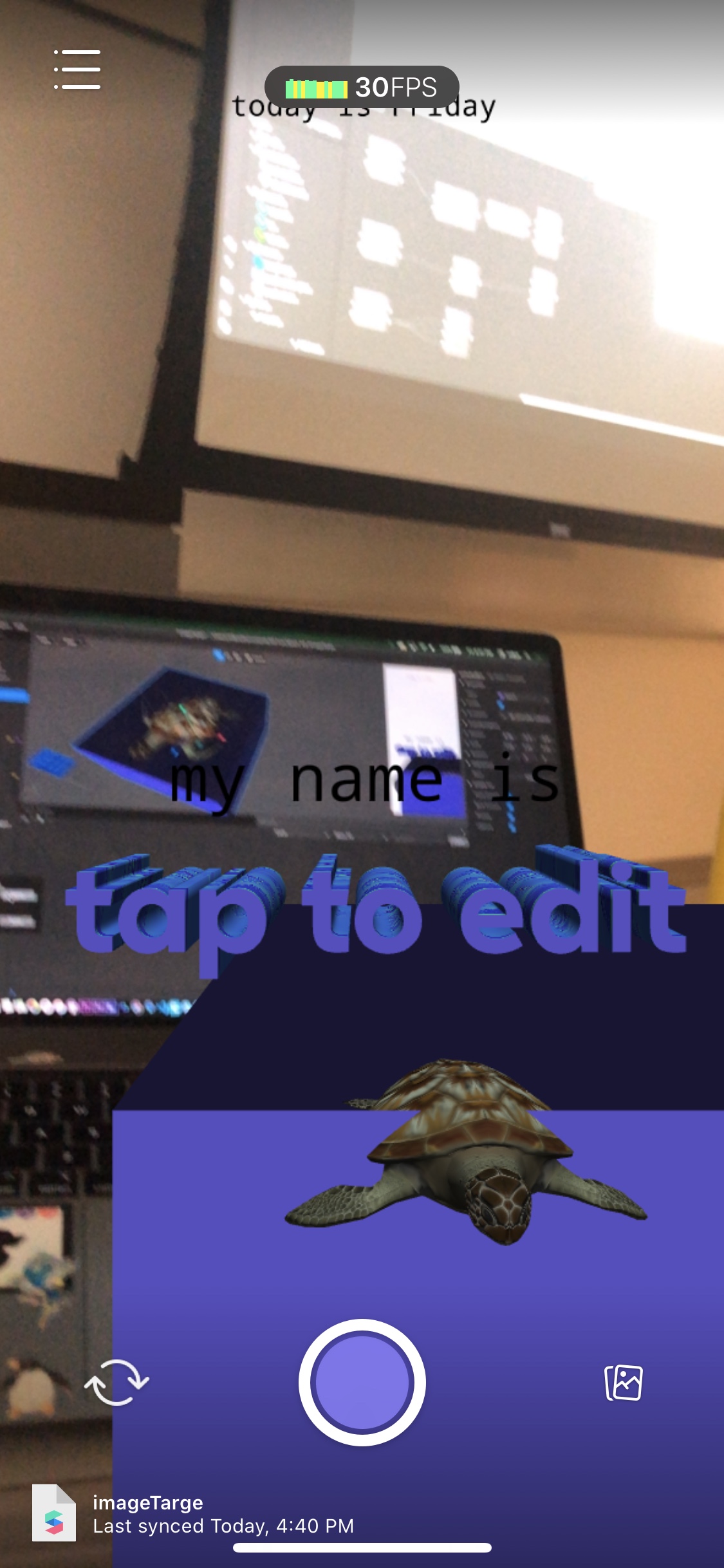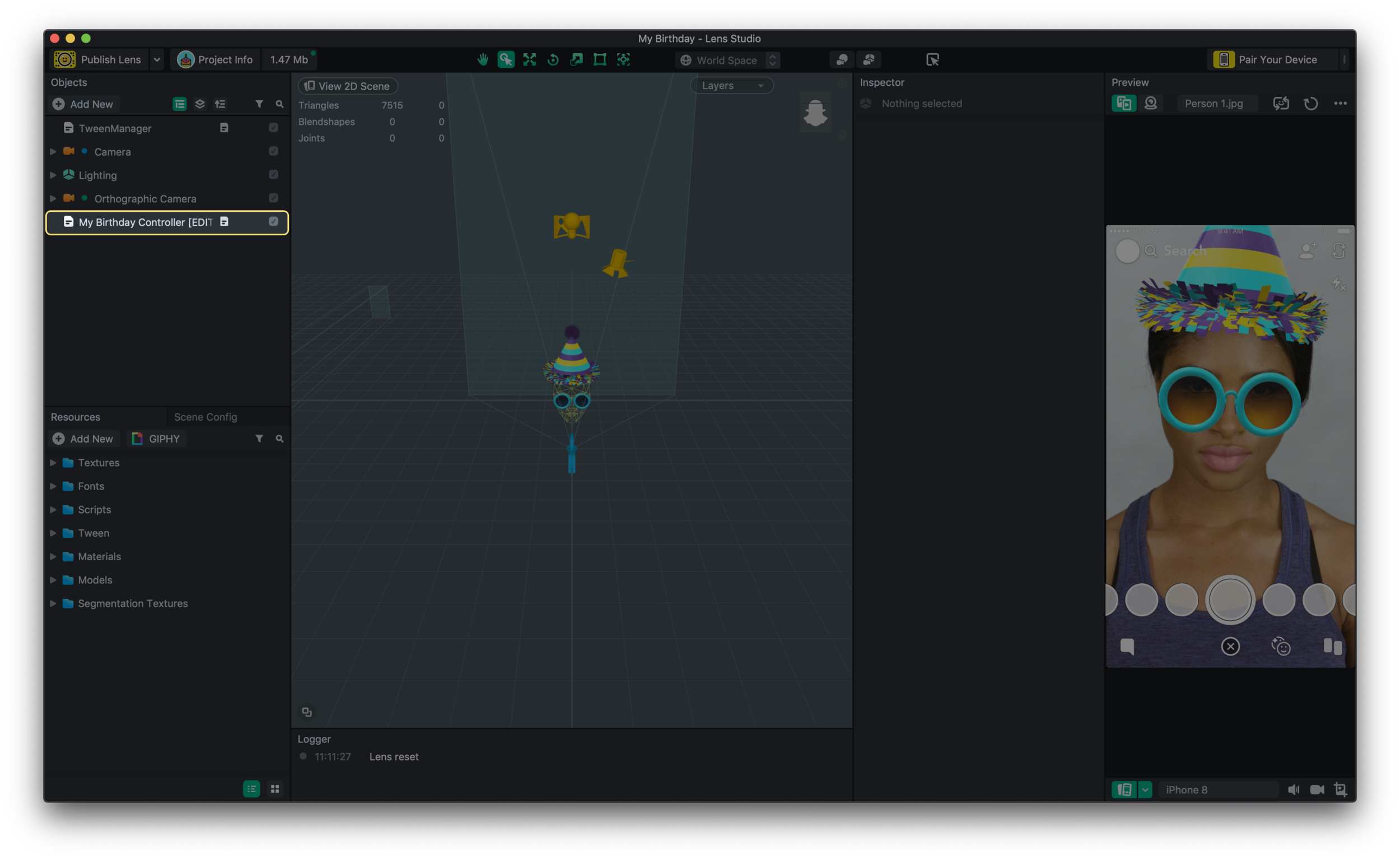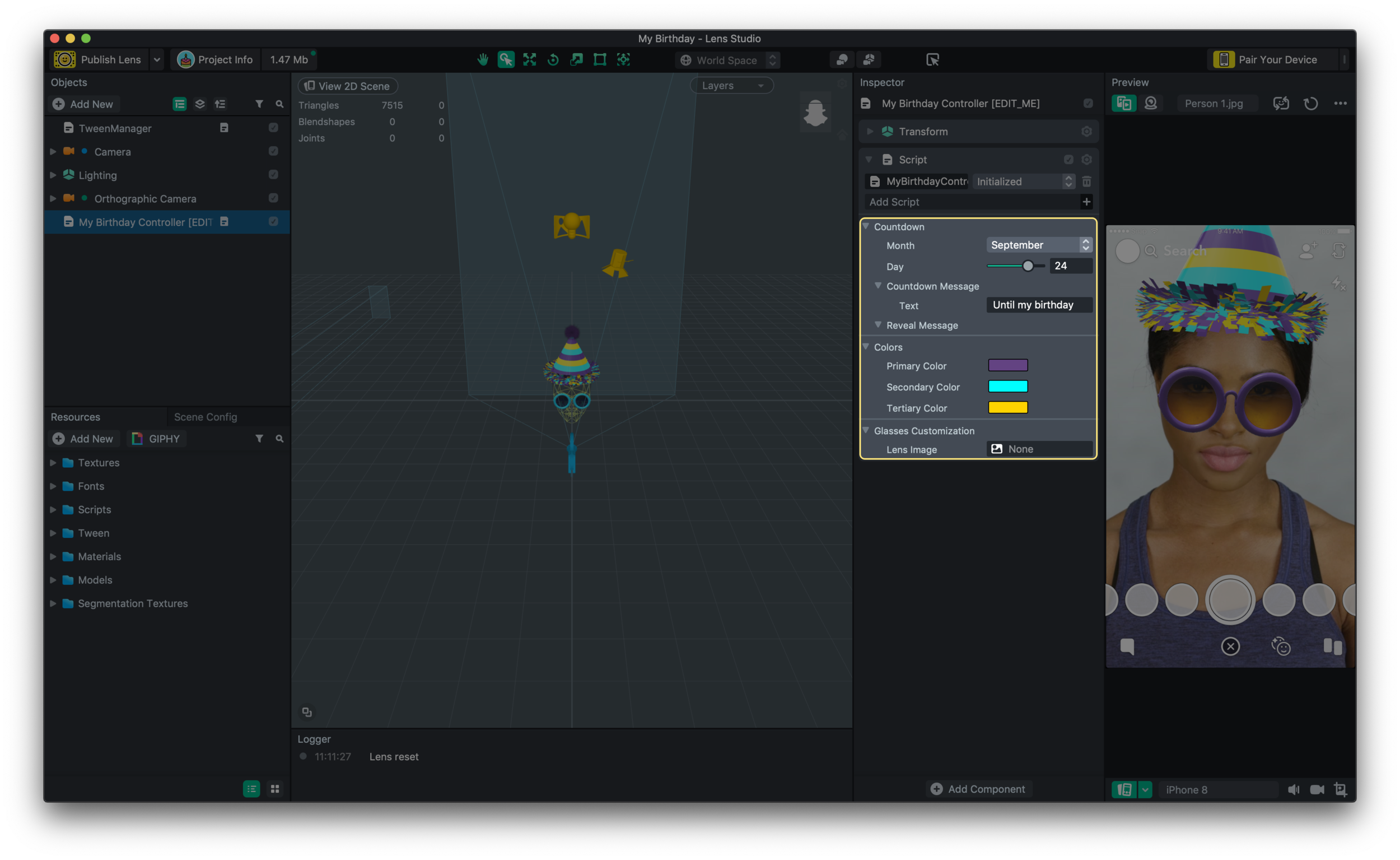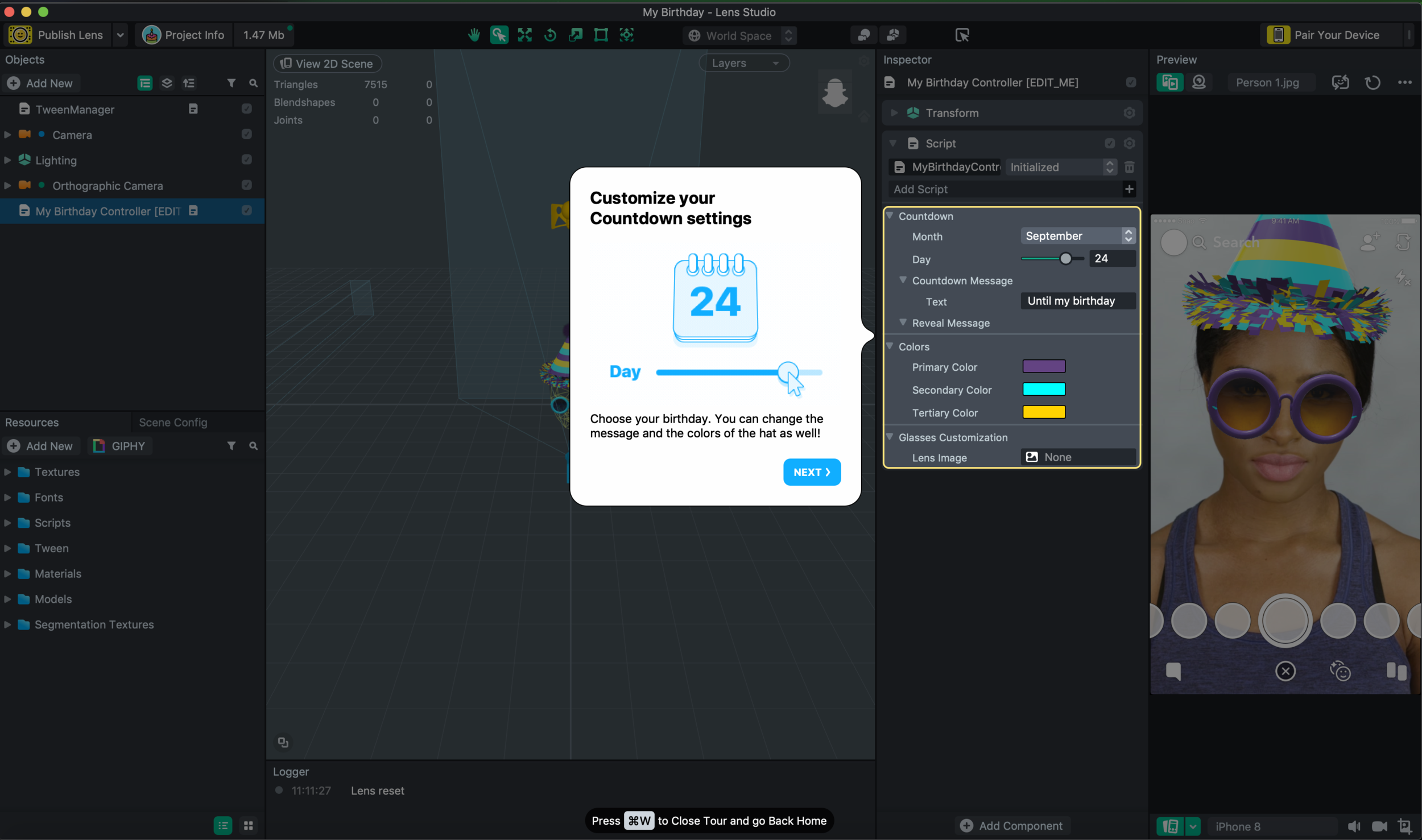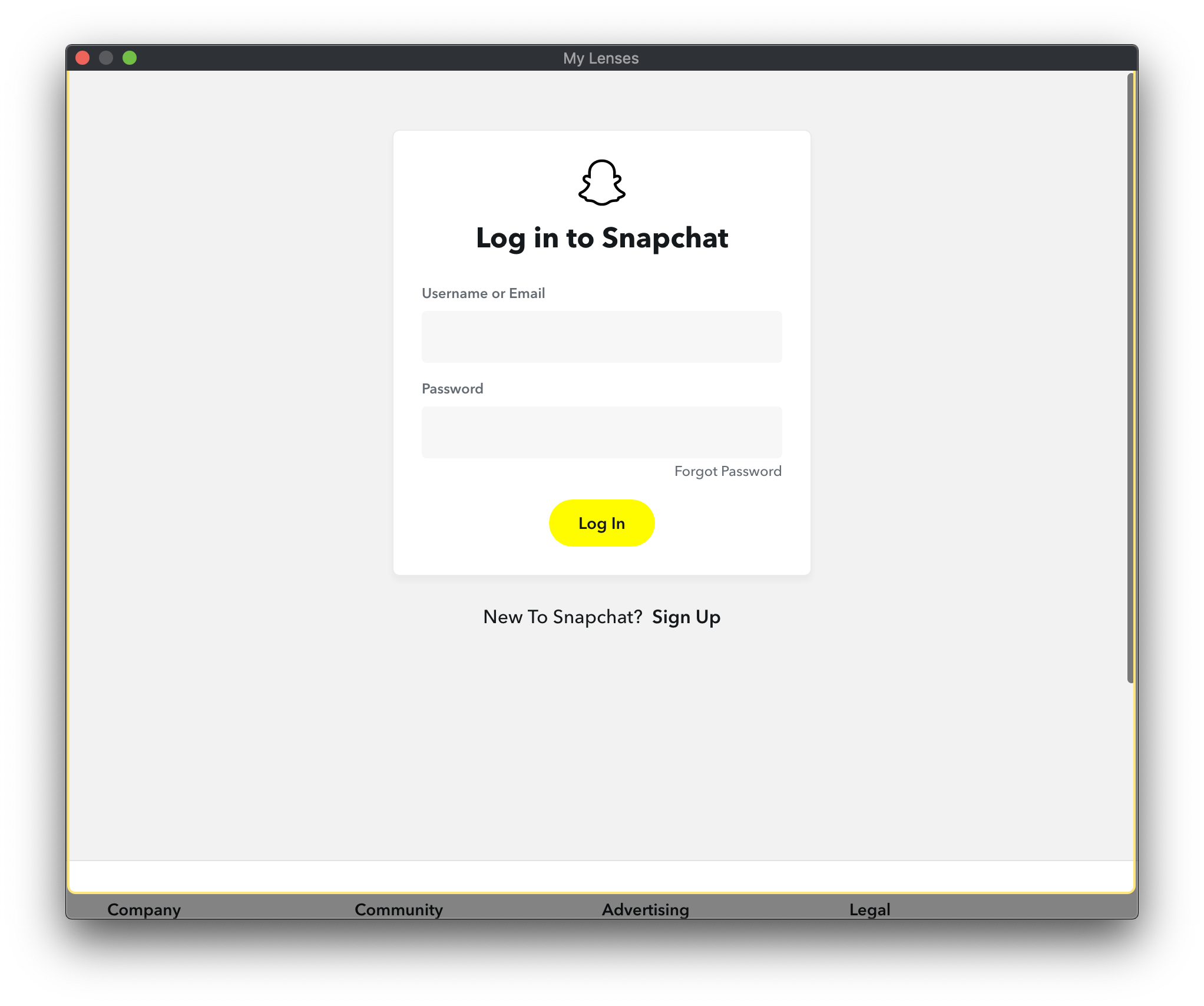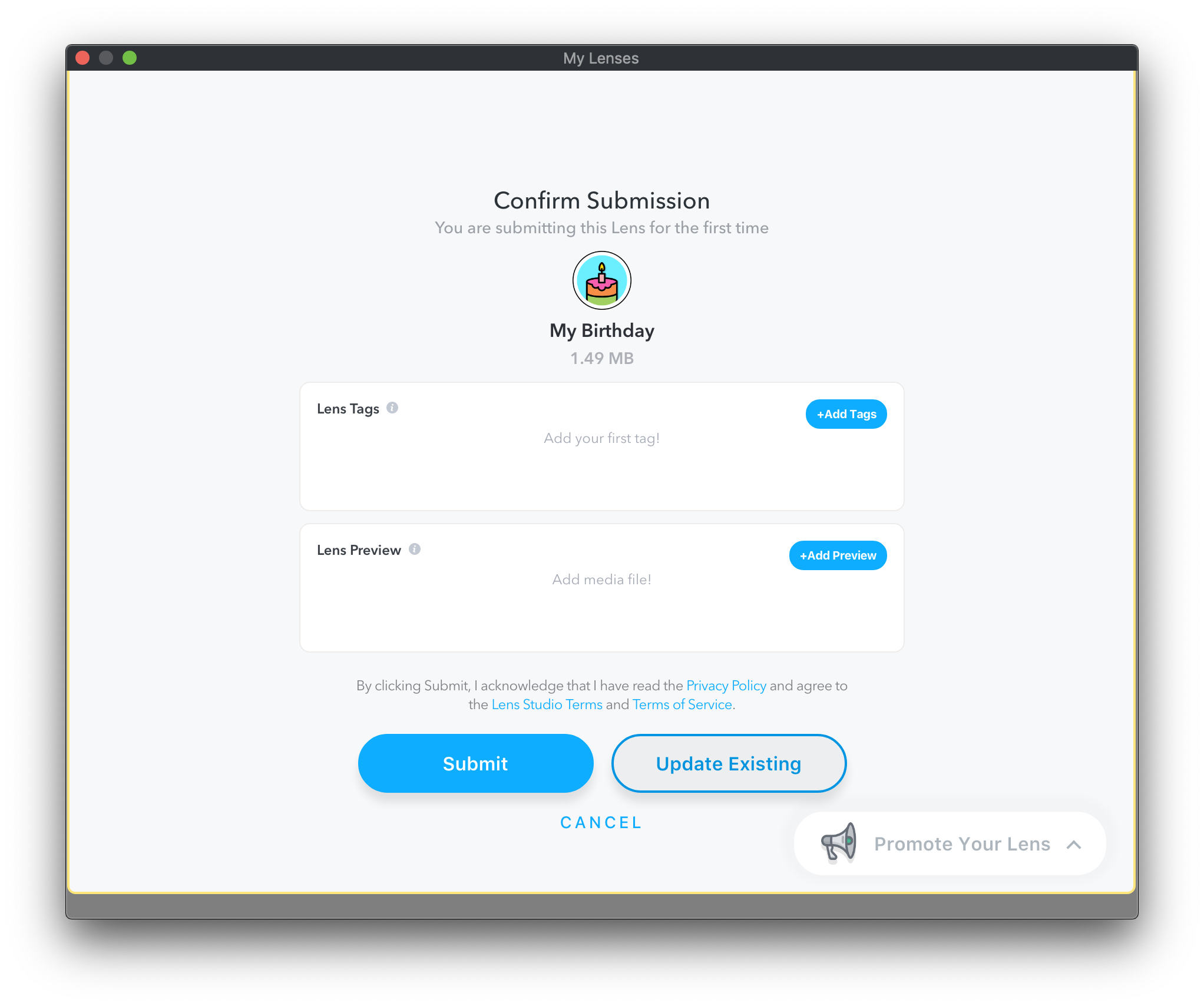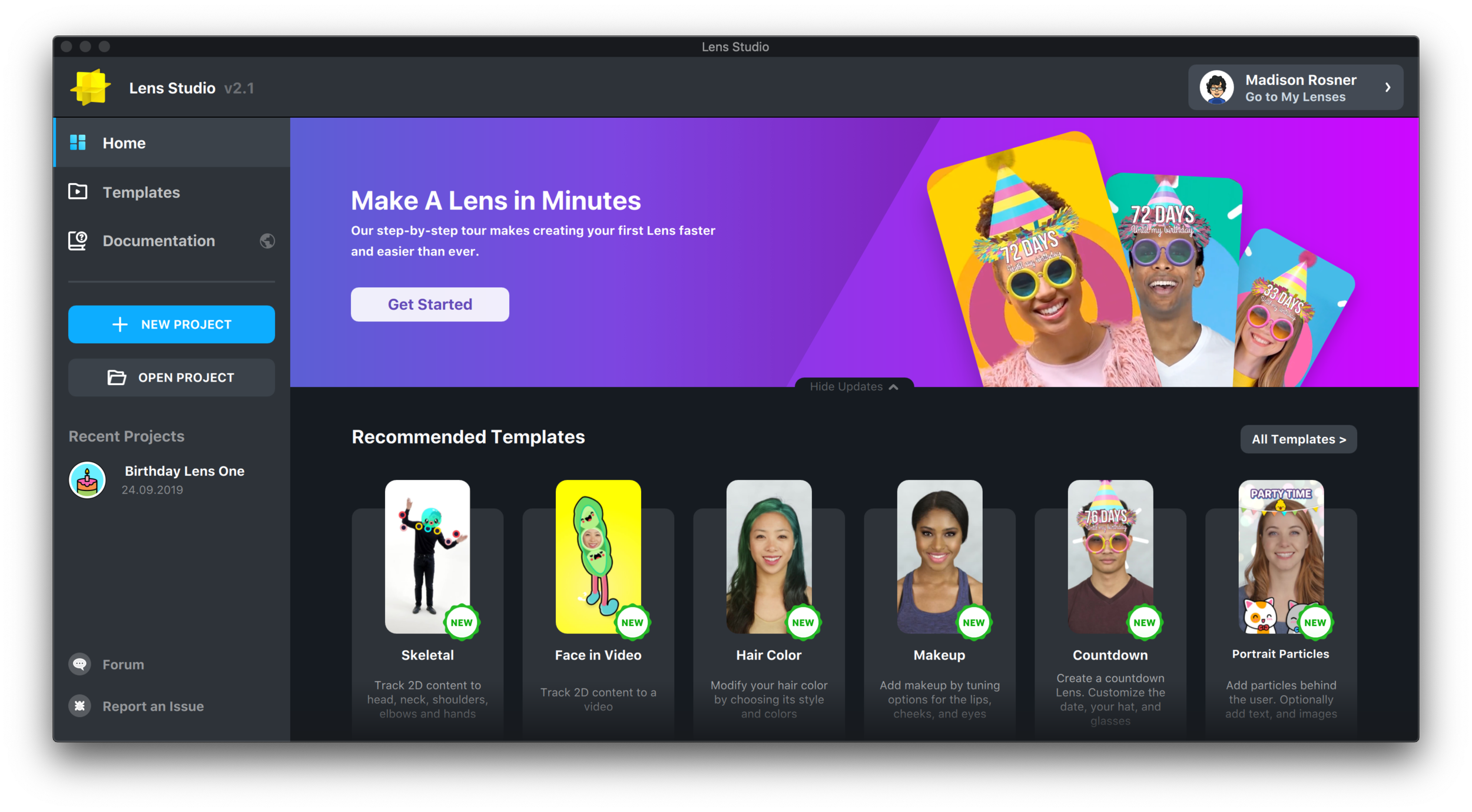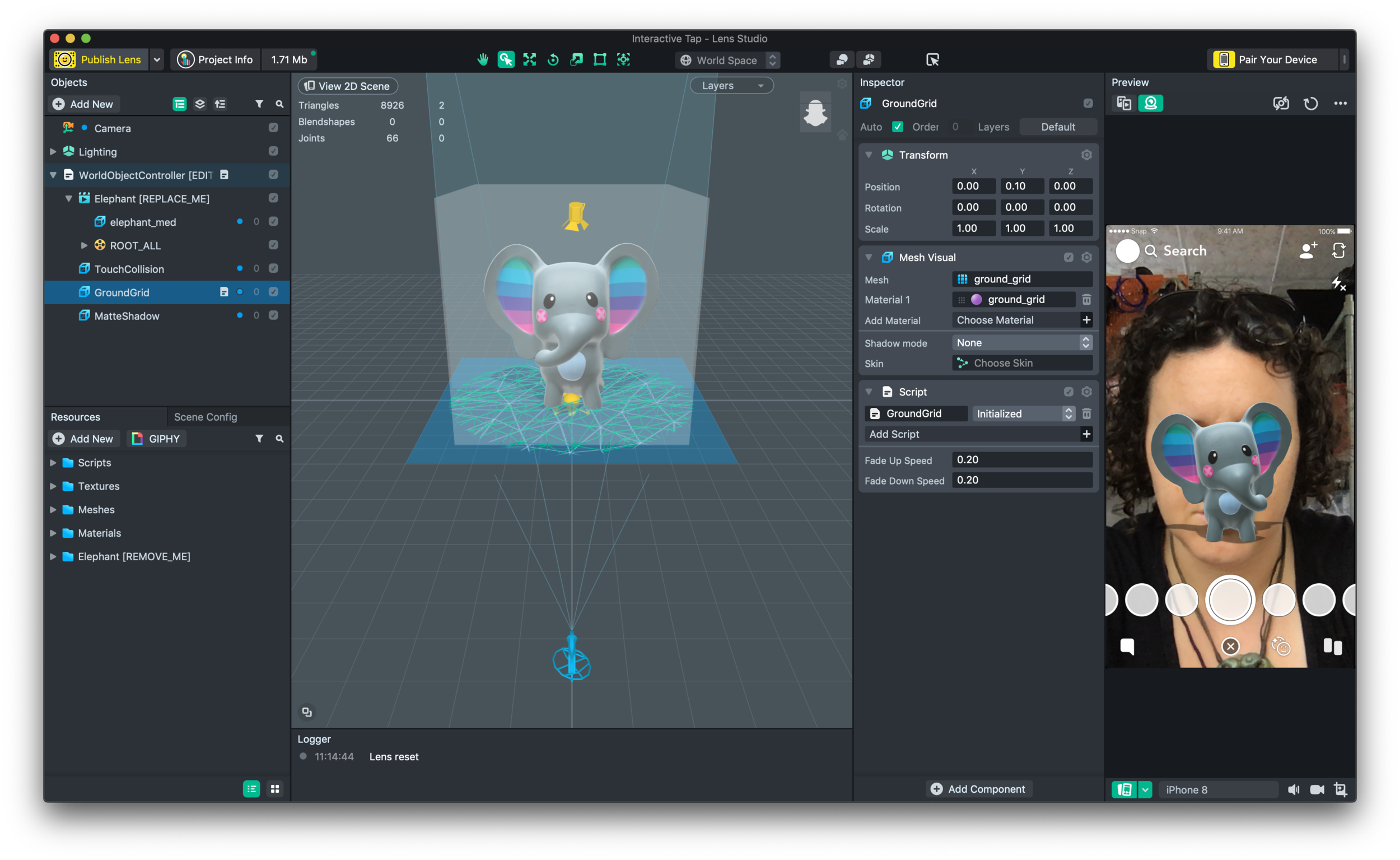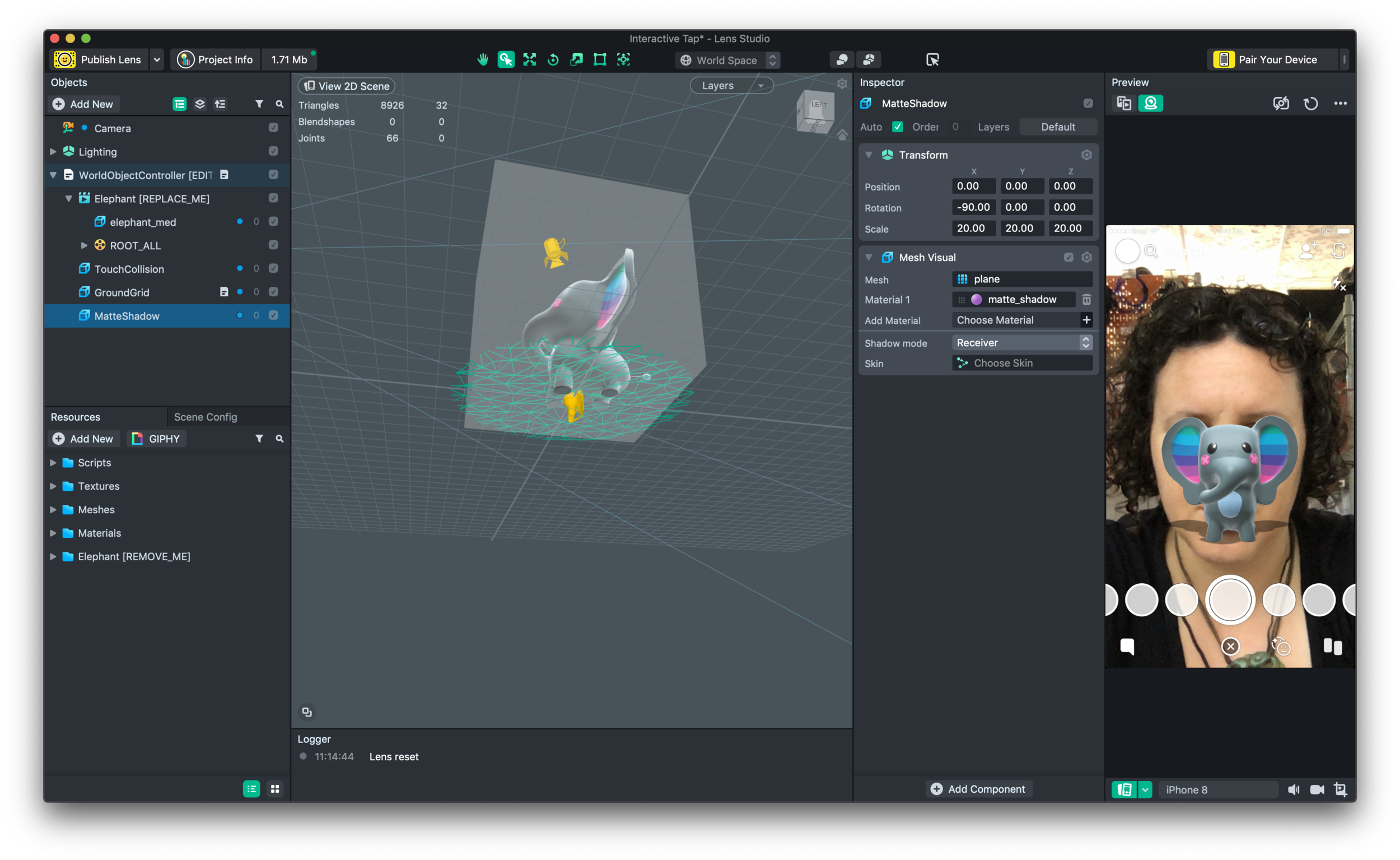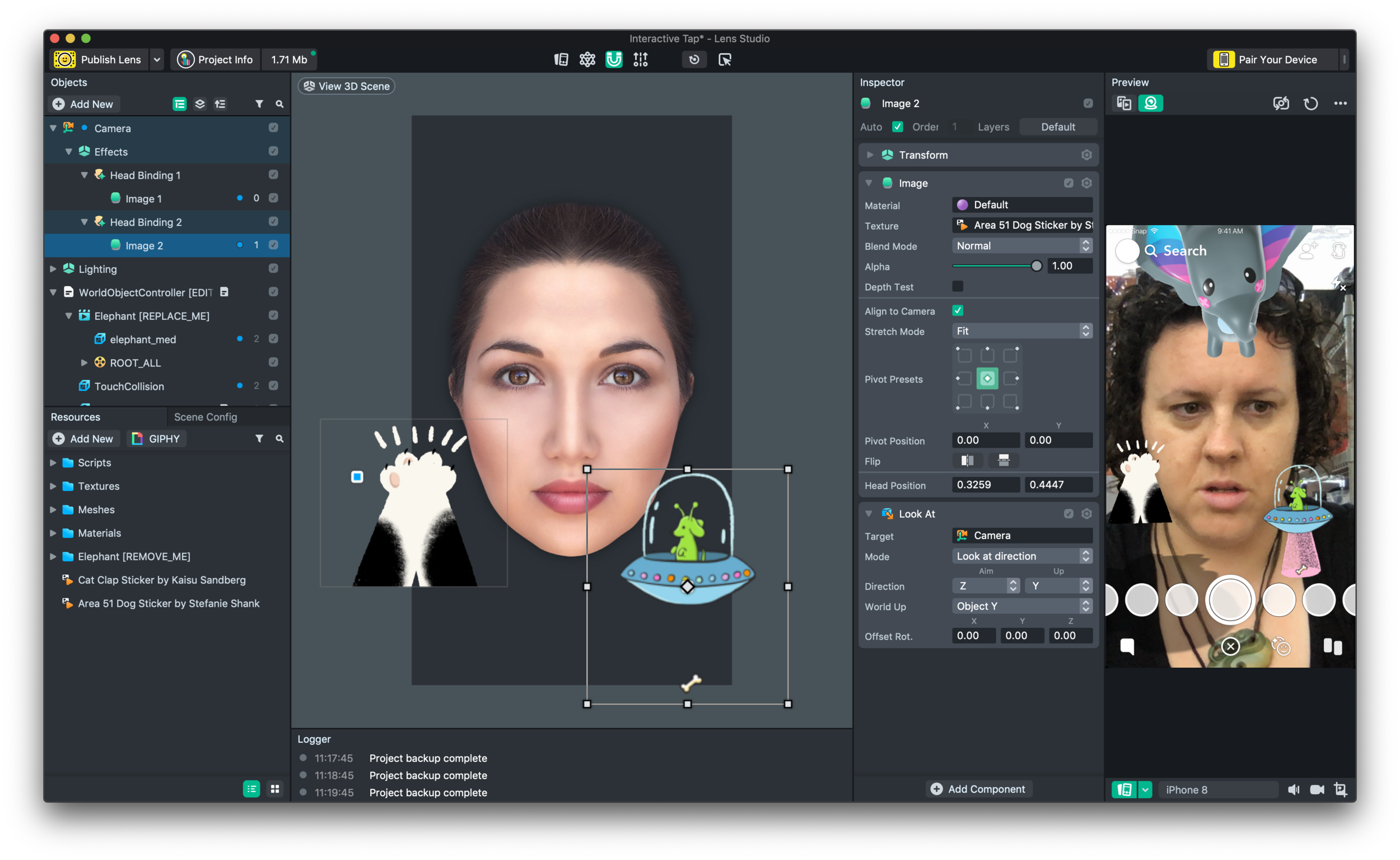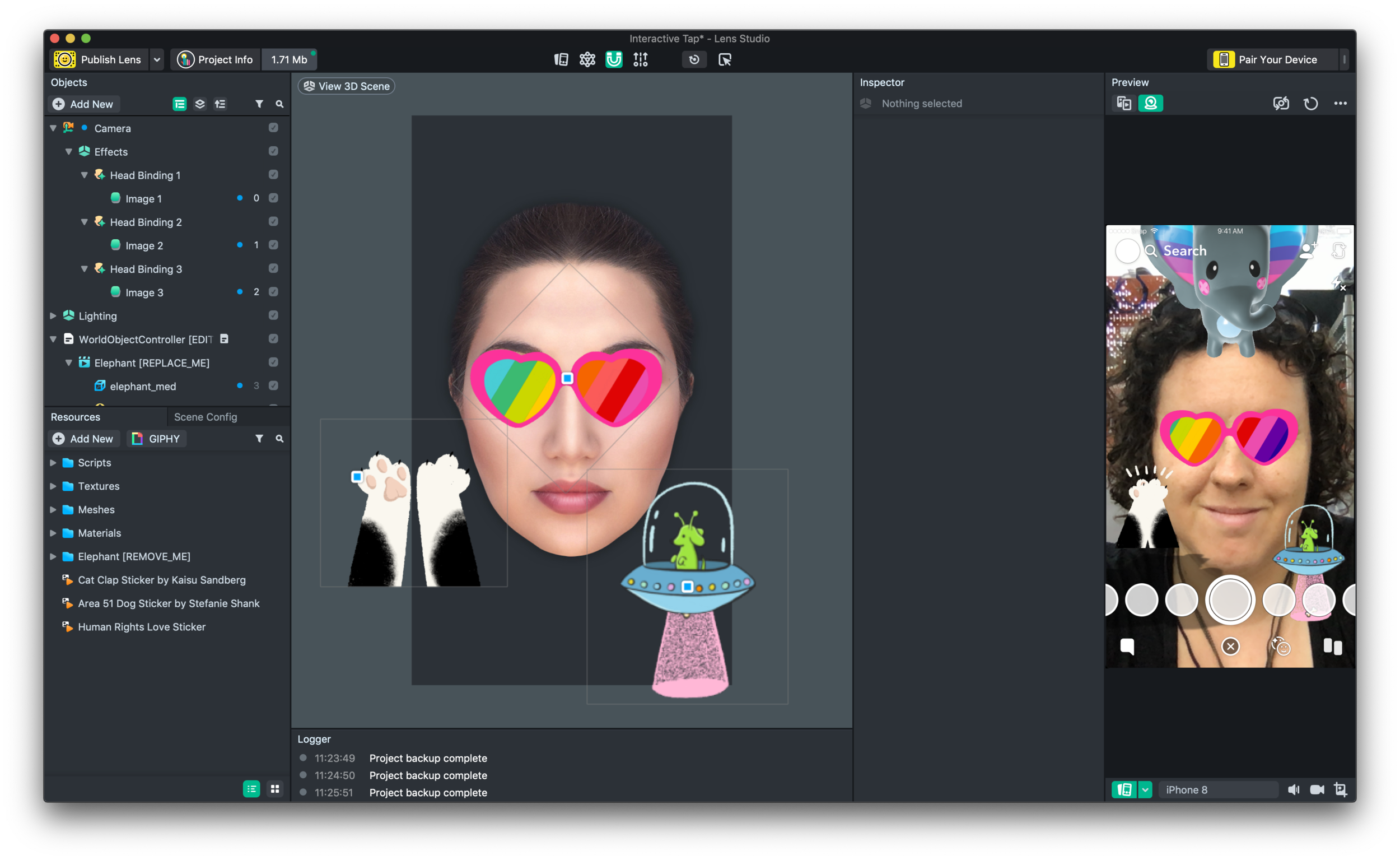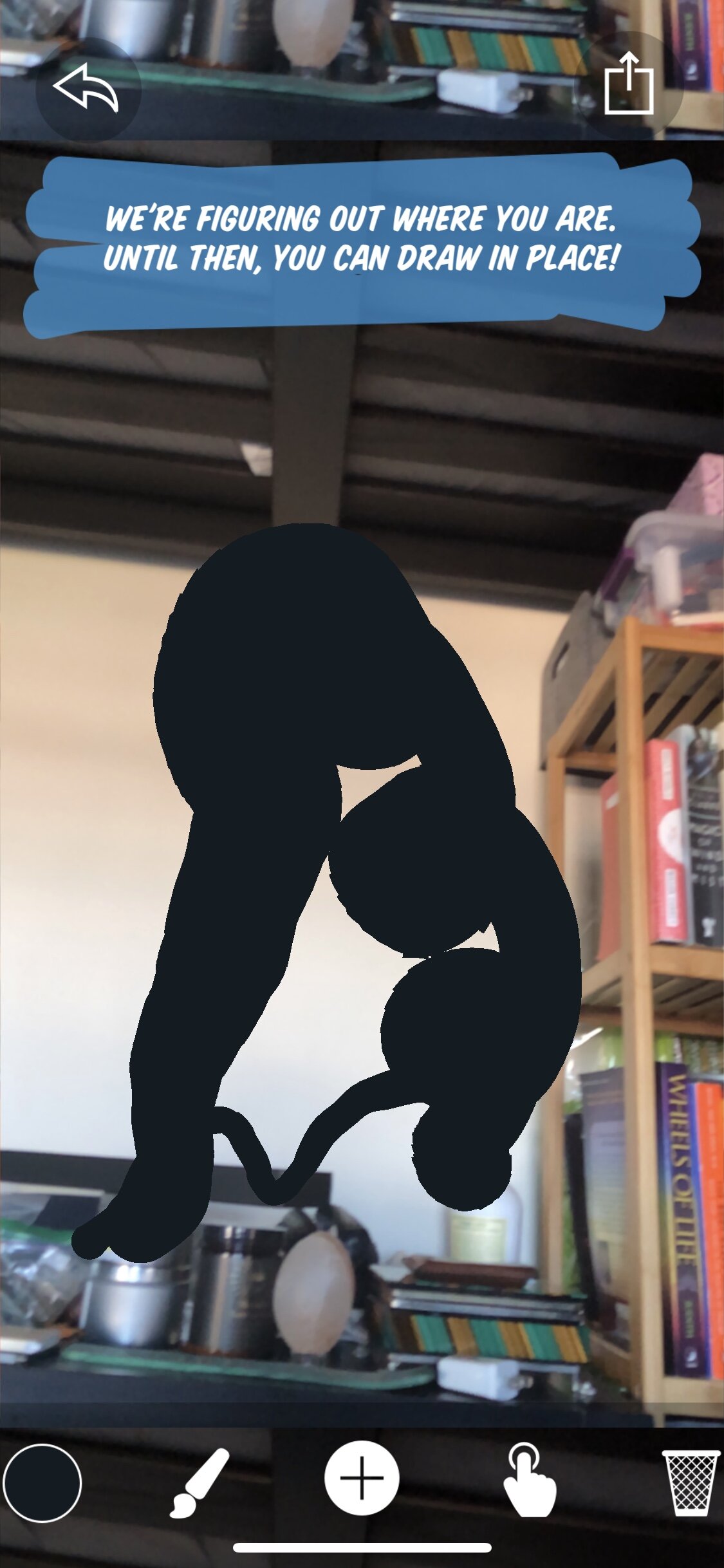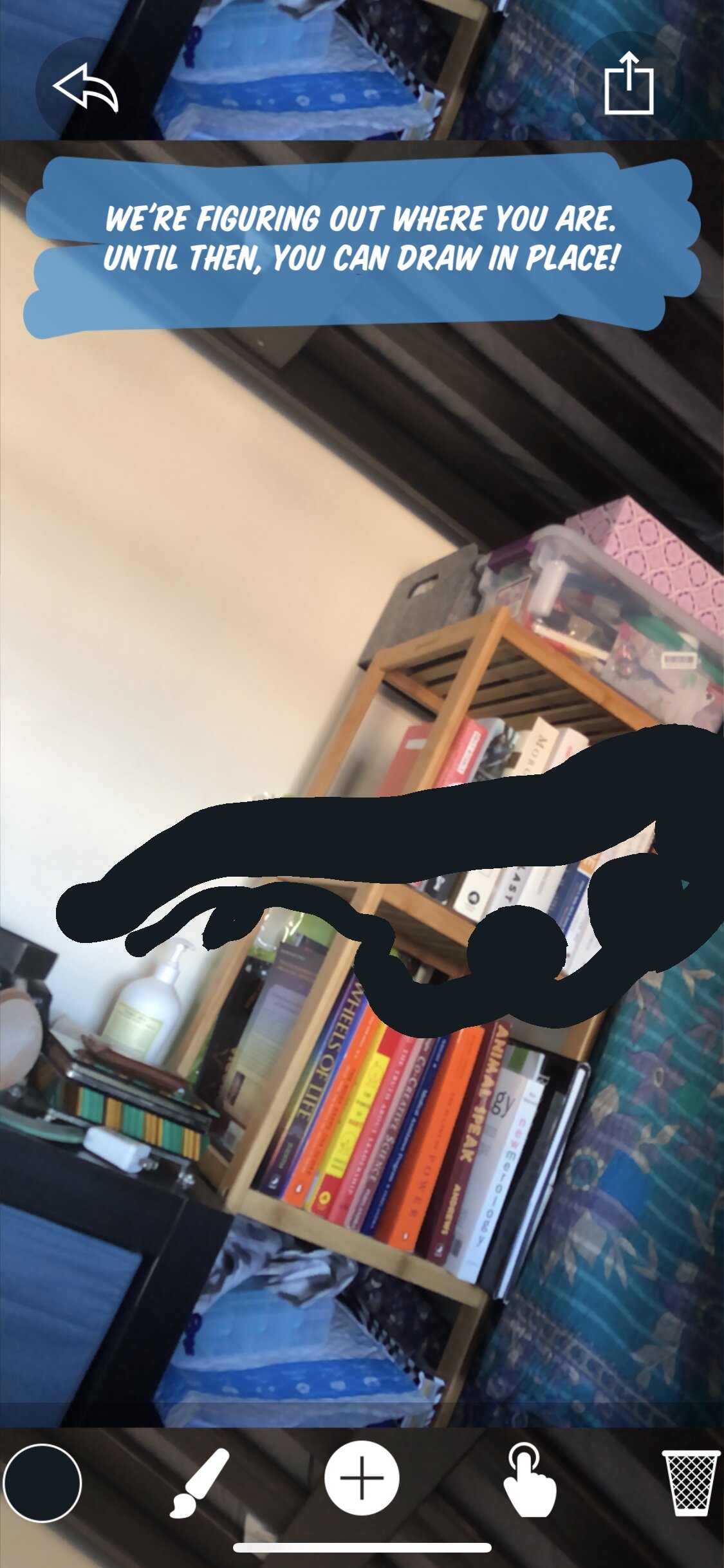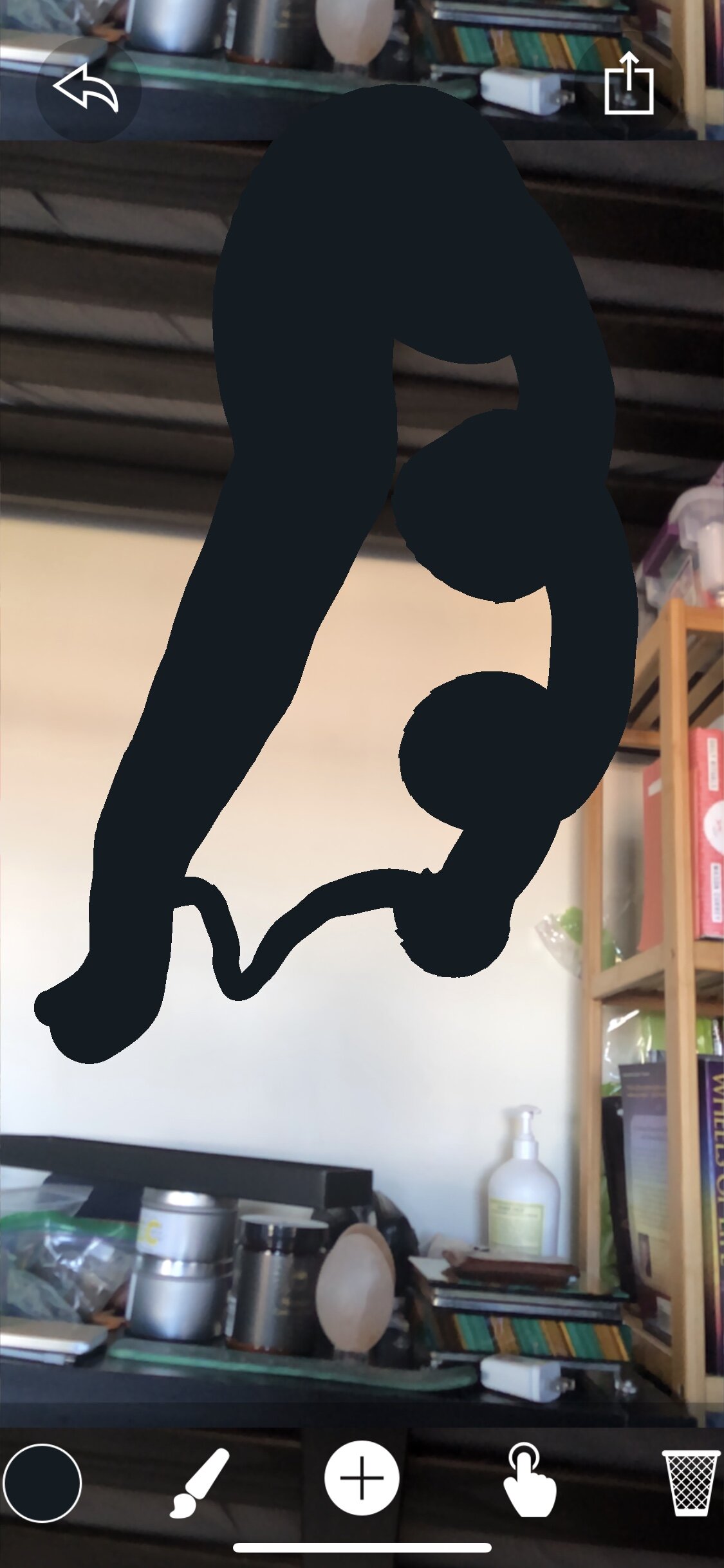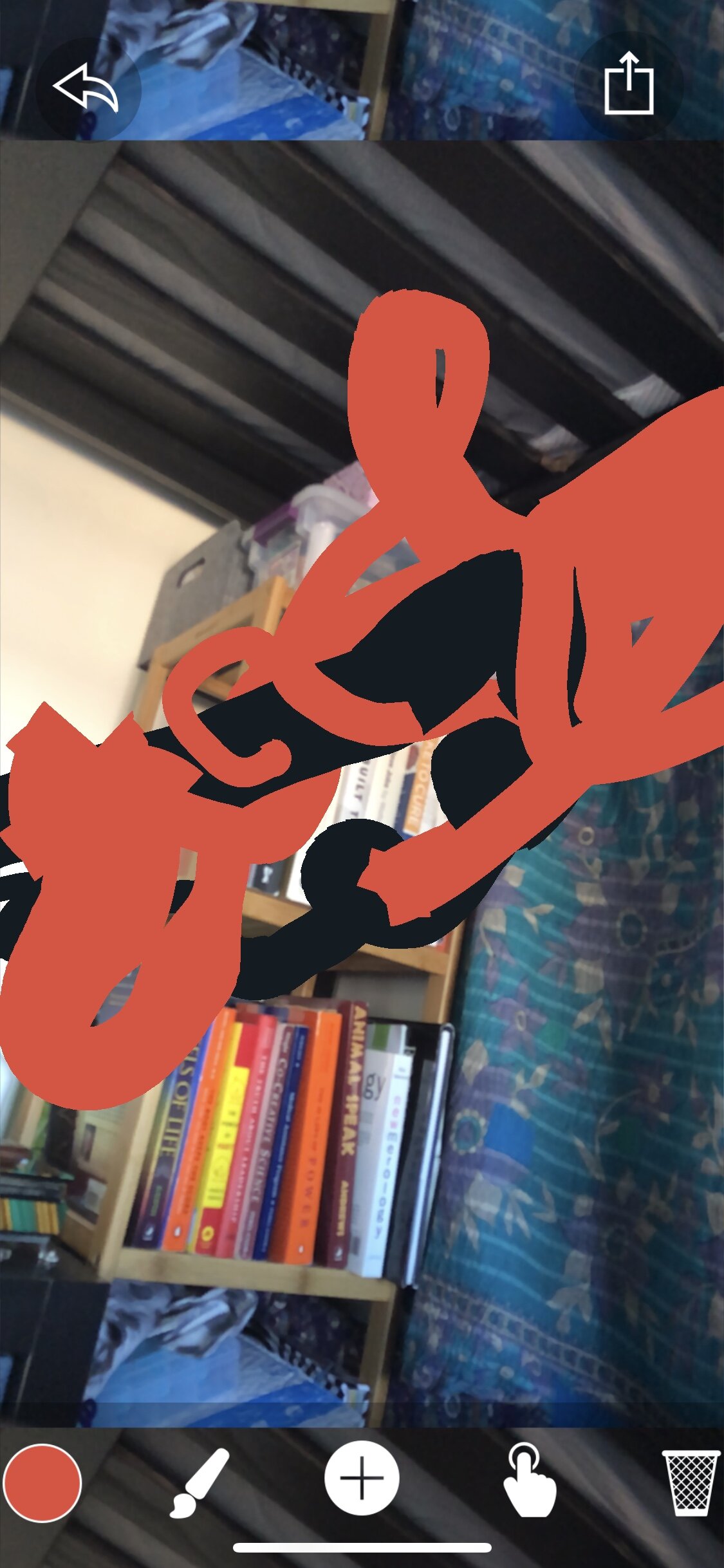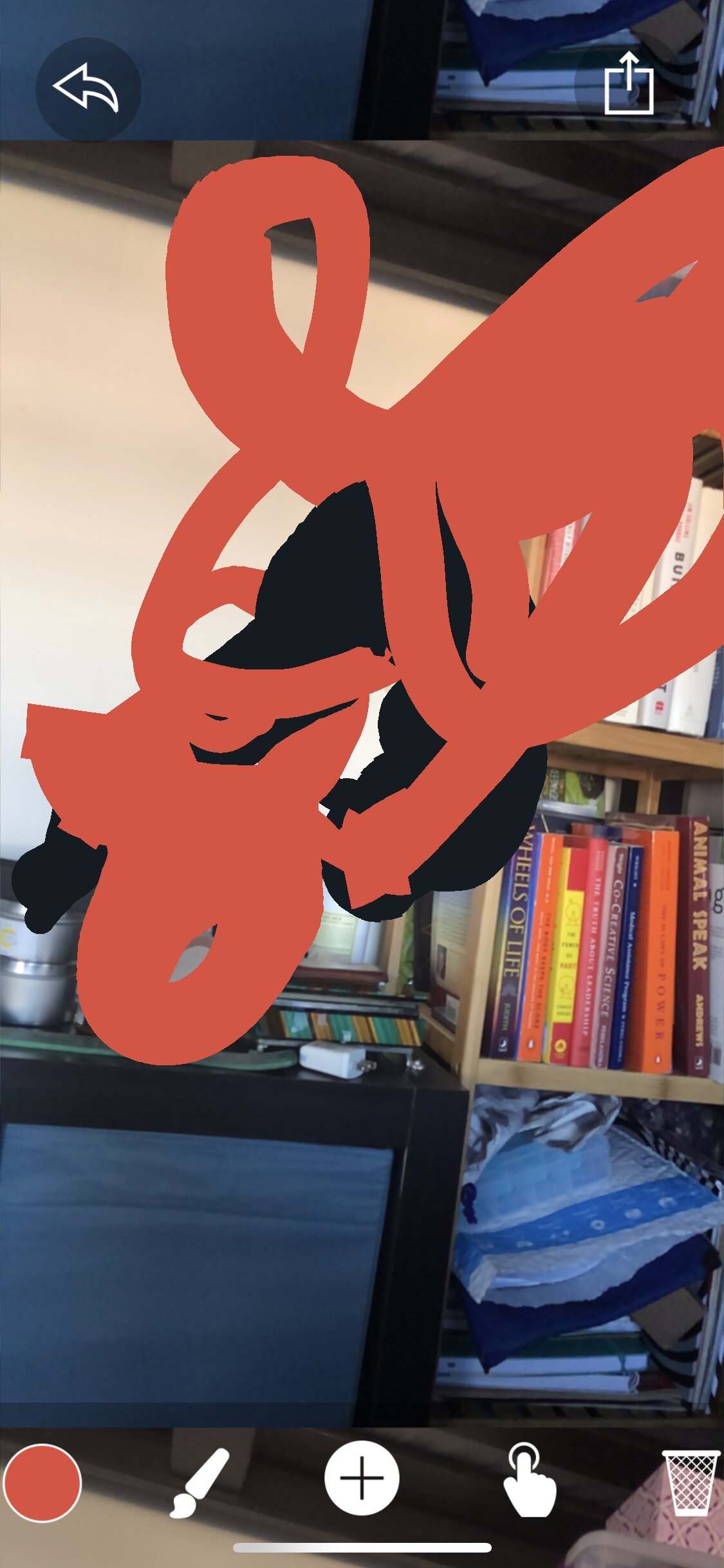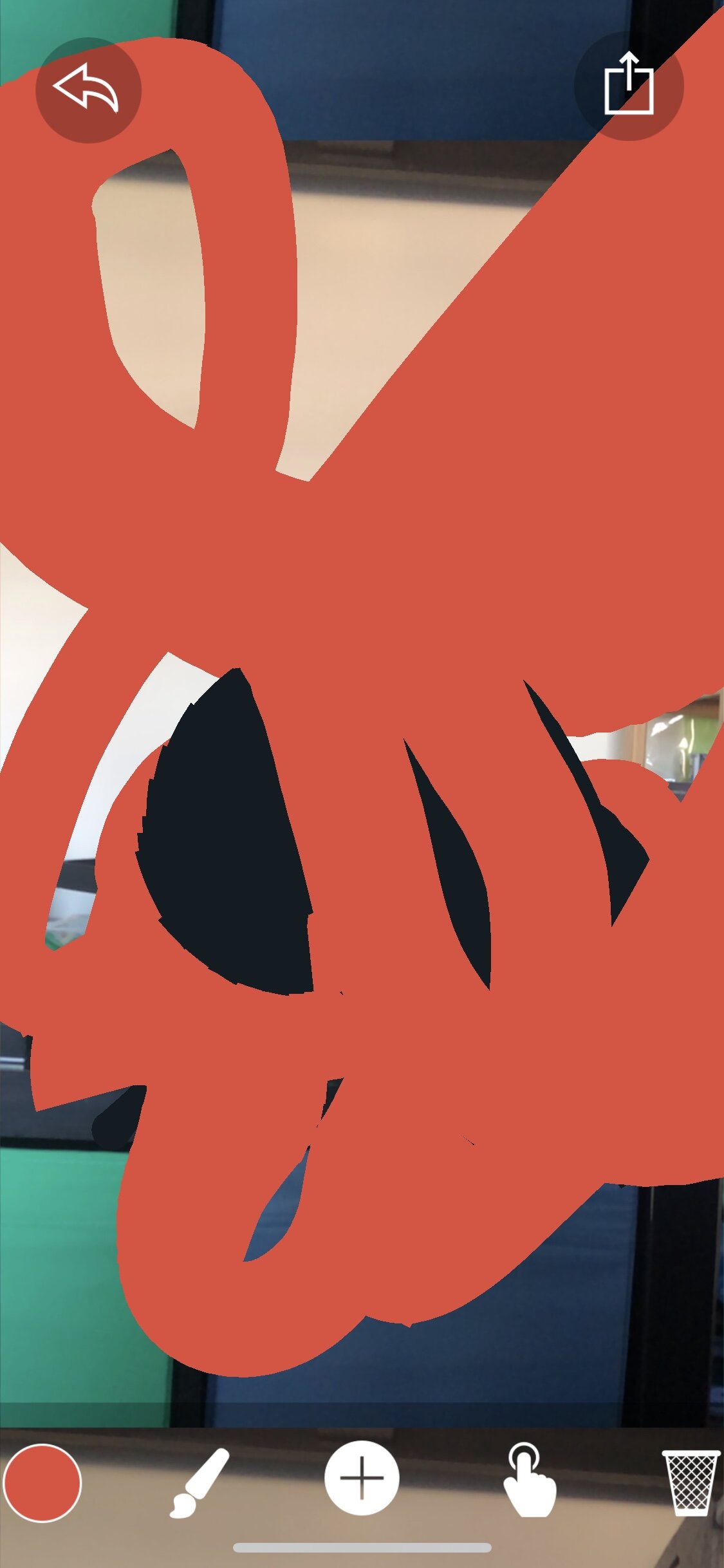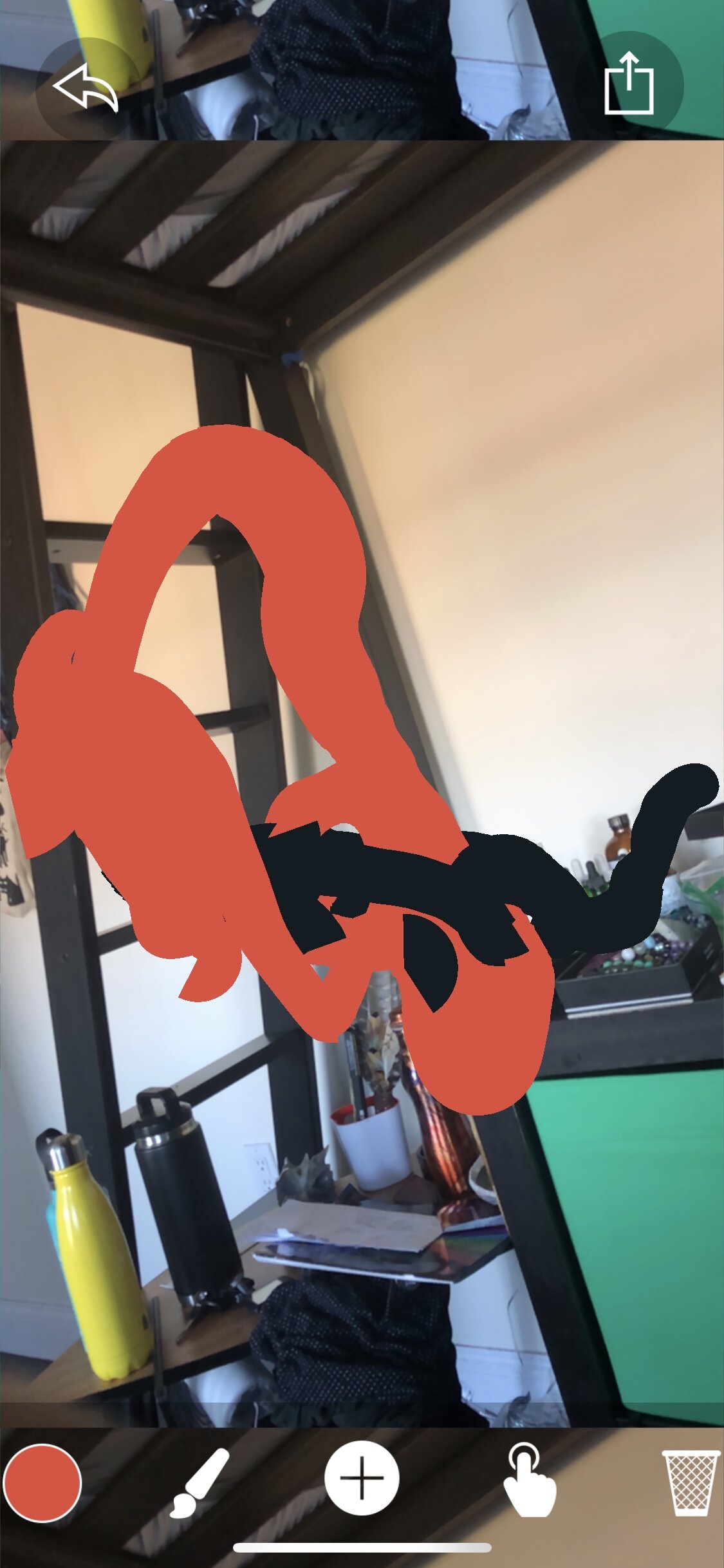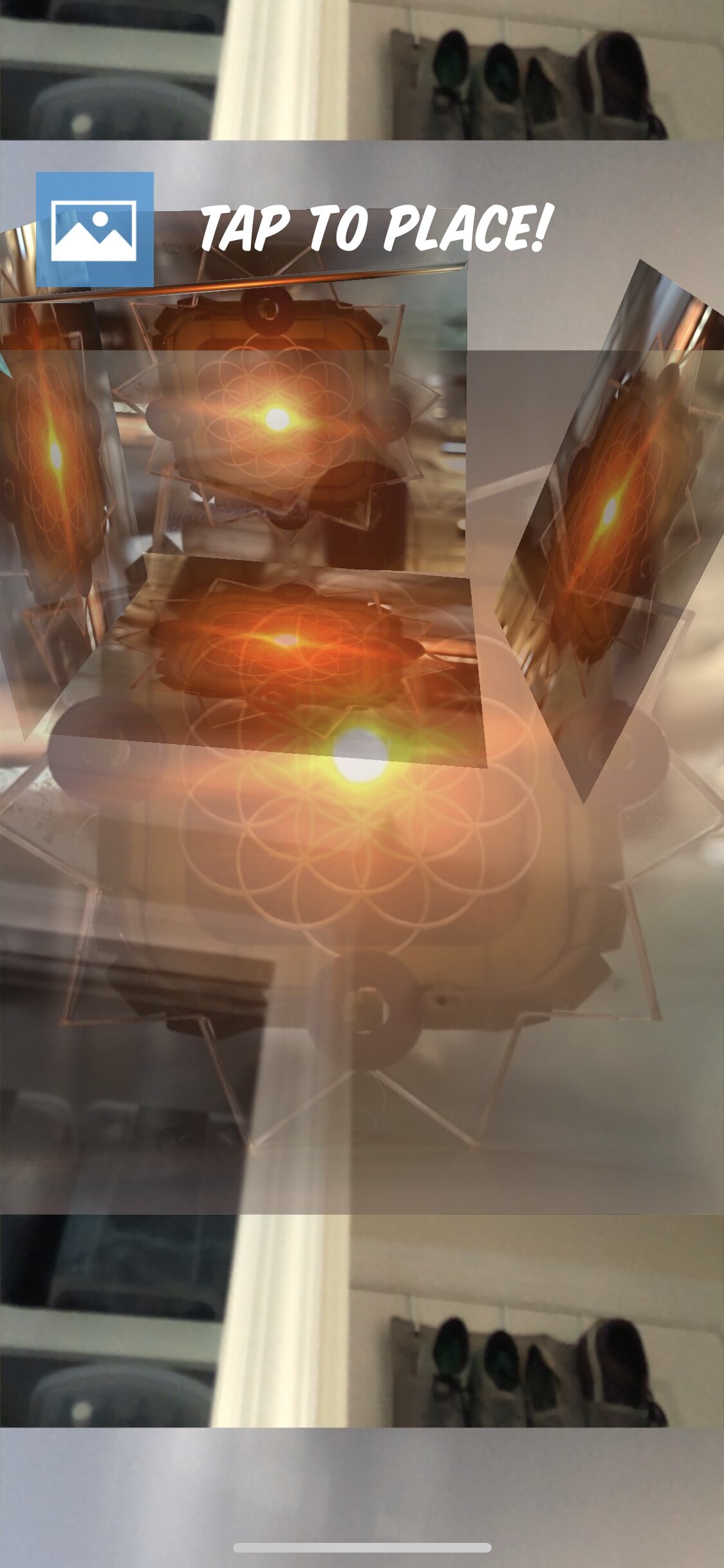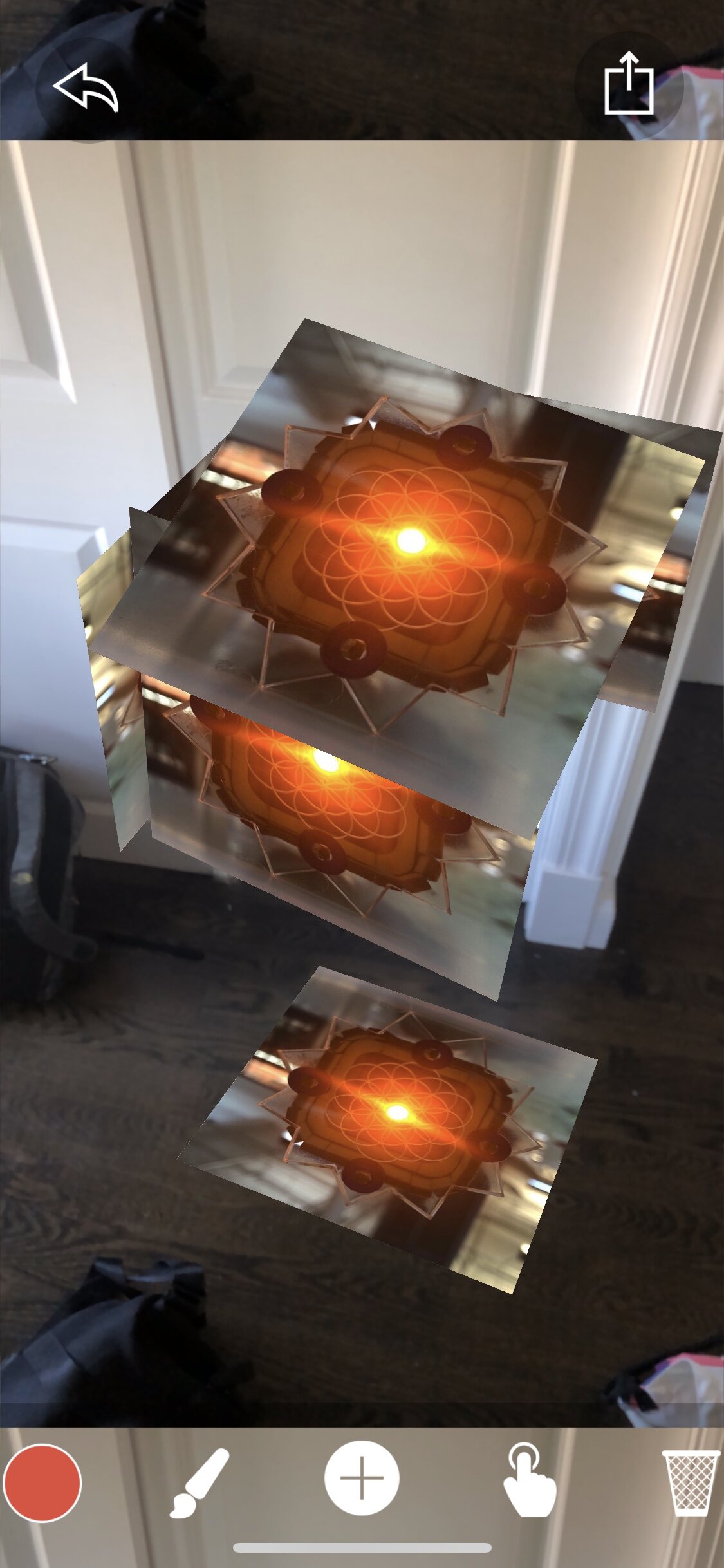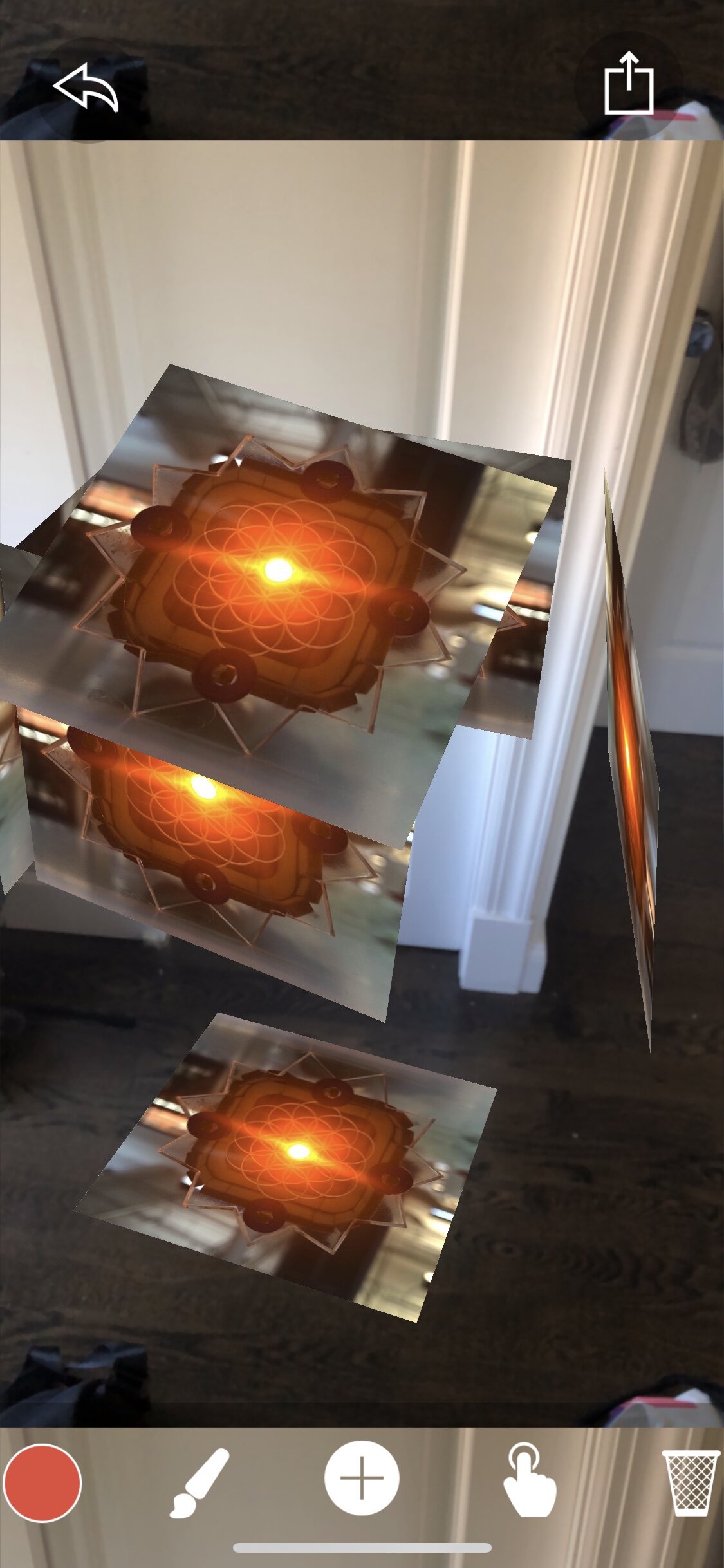a multi-player AR experience
Final Proposal
For the final, I want to use unity to create a two player interaction, similarly to my individual interaction using Spark AR. My goal would be to use Unity, Vuforia, and could markers to allow multi-player interaction. If I can sort it out, ideally I will include sounds and haptics if possible.
Midterm Project | a multi - player AR experience
experiments in creation
with imagination in mind
Midterm Project Idea
For the midterm project (and potentially the final) I would like to construct a multi-player experience where anyone of any age can play and contribute to a world of artistic contribution and play.
Preferably within a closed group of 3+, the user base would engage in an exchange of choosing a target image that becomes assigned to their player and chosen color. As they explore their new world with their connected device (aka reveal-o-matic) they begin to search for hidden three-dimensional shapes that will be coy in appearance until a player claims the shape and has the opportunity to create/draw/build an either an animated object, character, or 3d still character within the world.
Initial play will just be assigning users and finding shapes/claiming with color; further development would include the engagement and interaction with the 3d objects. This may be a bit ambitious for a semester project, but maybe it will be easier than I think. Looking forward to getting this project moving!
adventures
in Spark AR Studio
Weekly Creative Practice #3 | Spark AR Studio
It feels only fitting to do an experiment with Facebook’s Spark AR Studio after Snapchat’s Lens Studio. Although timely, I had signed up for a workshop for a deep dive into Spark AR with an Intro to Augmented Reality Storytelling with Spark AR Studio course offered by the by AR VR Journalism Lab at the Newmark Graduate School of Journalism at CUNY.
We focused on creating two types of AR interactions: target plane interaction with a specified image target to pop another image and to also determine a plane with user interactions and to have an interactive object appear on any flat plane. In the second interaction, we played a bit more with text and editing text from the users’ point of view. A 3rd interaction that we didn’t quite complete would be hidden elements using canvases and boxes.
I found the tool a bit more intricate and buggy compared to my experience with Sanpchat’s Lens Studio; however, I know that I am just beginning and learning the quirks of both programs. I did experiment a bit more with user interactions with Spark AR, but did not yet get into layers. Until next time.
For the image target, we used an image of a sea turtle and when captured using the Spark AR app, a turtle appeared with animation and sound. For me, the sound would not work on the app, but was present within the studio.
turtle soup
user-interactive to pinch to zoom in/zoom out, and rotate, as well as drag to re-position, placing the turtle in the bowl, creating a turtle soup.
boxes and texts
playing with automated text based on day of the week; tap-to-edit interactive text in both 2d and 3d and hiding the turtle in a 📦 — still working this one out!
fun while playing
with Snapchat’s Lens Studio 2.1
Weekly Creative Practice #2 | Snapchat Lens Studio
This week while looking into the new iOS 13 I came across an apple story on Snapchat’s Lens Studio in the Developer Tools section of the app store on Mac OS. Because of my time working for Snapchat (early years) and recognizing Oleksii, it caught my eye and I decided to read the article and then download and see how the tool worked. I figured it would make a good option for the case study for this week.
Upon startup, the app takes you through a very simple and basic tutorial of how to use the objects, resources, and inspector in creating your multi-layered lens to work directly with your snapchat account. The tutorial starts you off with a basic birthday hat and graphic that you can add to and create your facial and spacial ar experience.
In the tool there is a live viewer so you can see directly what you add, where it shows up, and how it tracks movements. There is a template gallery to get you started quickly, and I found the utility tools very intuitive and fairly easy to manage since I’ve also had experience using unity, unreal engine, sketchup, vectorworks, and a variety of other 3D tools. I felt as though the designers who built the application took UX for a variety of users into account and put together a very simple and elegant tool to create a personal lens for Snapchat within minutes!
An experiment at drawing in space..
..an attempt is more like it!!
Weekly creative practice #1 | Paint Space AR
In class, we discussed Google’s ‘Just a Line’ and the complexities surrounding drawing in space. This week I decided to give the drawing in space apps a go and found a few on the app store. I decided to use the Paint Space AR app by Zane Assets LLC and found it incredibly difficult yet fun to attempt to place things in space with my phone.
To begin, there’s a great tutorial that gives you access to all of the fun features that you can add to a space, drawing, or art creation. I was not able to take any screenshots with these animations as I did not know they were not available to use in the free version after the tutorial. At this point in time, I do not see myself using this too often so opted out of the added expenses and do not have any screenshots to impress.
The two features that come included with the app are a simple paint brush with 6 color choices with stroke thickness as well as a photo placement option. I decided to play around with both and see how difficult this would end up being, knowing that the shake of the hand and the way the phone’s accelerometer works PLUS no guiding from the app would result in something less than perfect — and behold a cube attempt was more like a shack of a house that would barely keep the wind out.
Holding the phone steady was pretty impossible for me — possibly the charge of caffeine or just the fact that I am not a still person. The UI of the app is pretty simple and easy to follow and understand. The app does a good job of orienting after leaving and returning and has a nice live response where you can actually draw in-between things in space! I combined my imperfect cube with a line of dimensional magnitude to poke holes through the inaccuracy that existed. With that said, I will not classify myself as an expert 3D AR builder just yet.. but who knows, the house of cards I’ve always tried to build out of a deck of cards could see the day of light after 30 years.
As an exercise or practice, I can see this technology or utilization of AR to bring people into an experience of game play, 21st century version of Draw Me (3D edition), sculptural art that could disappear (ie Snapchat & Jeff Koons), and more fun ways to bring the interactivity of using mobile devices to unlock more than what meets the eye immediately.
